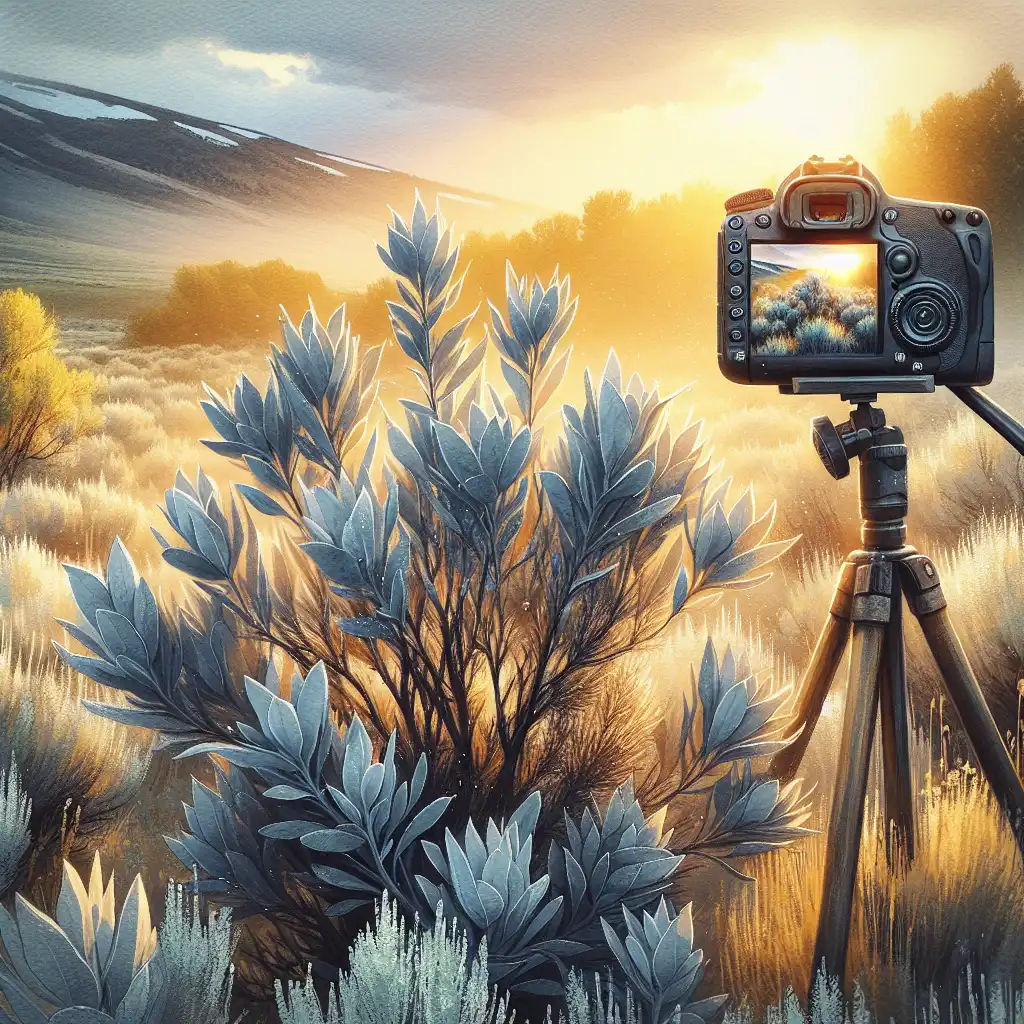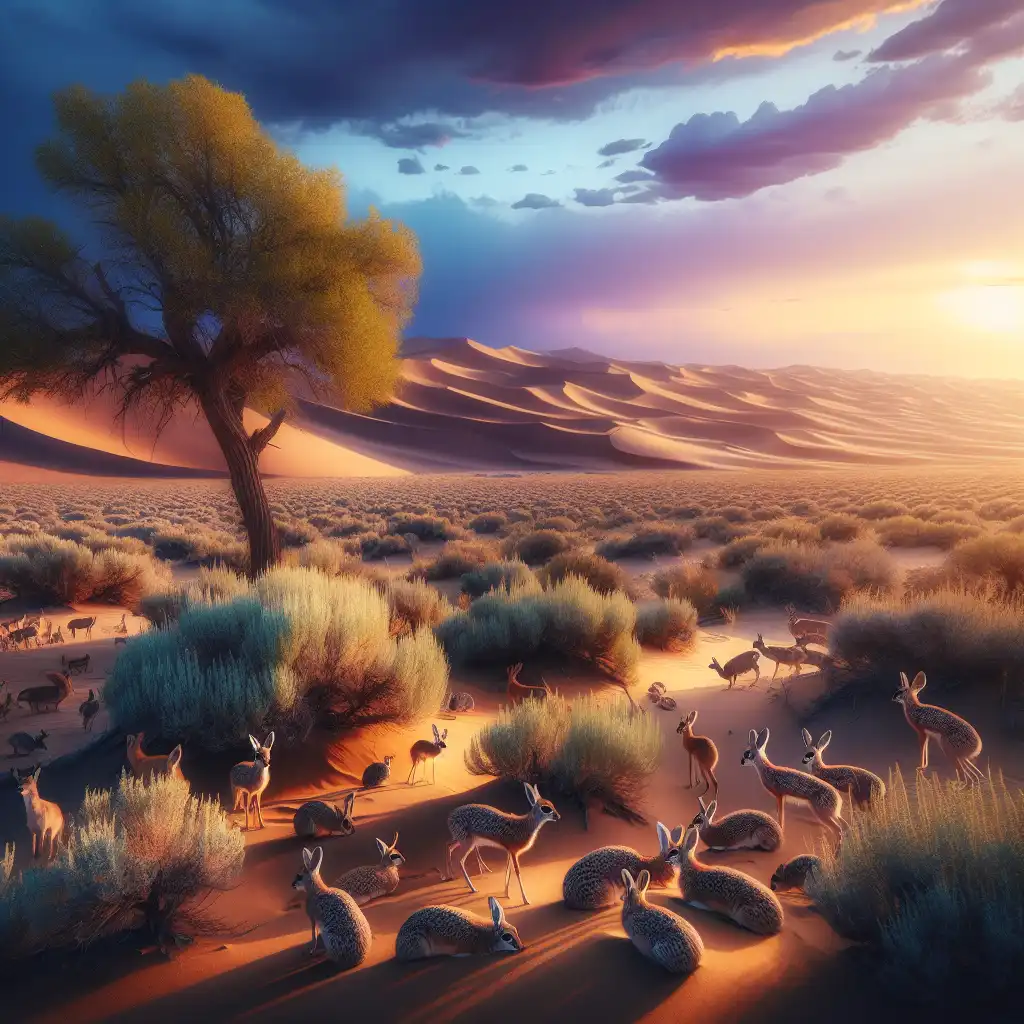
Sagebrush
Natural Habitat
Sagebrush commonly grows in arid, open areas with little rainfall, like deserts and steppes.  While hiking in the arid west, we spotted sagebrush dotting the landscape.
While hiking in the arid west, we spotted sagebrush dotting the landscape.
Visual Identification
Identify sagebrush by its silvery-green leaves and the clusters of yellow flowers it produces.  The painter captured the silvery tint of the sagebrush leaves in the sunlight.
The painter captured the silvery tint of the sagebrush leaves in the sunlight.
Ecosystem Role
Sagebrush is important for its ecosystem, providing food and habitat for wildlife.  The sagebrush serves as a shelter for many small desert animals.
The sagebrush serves as a shelter for many small desert animals.